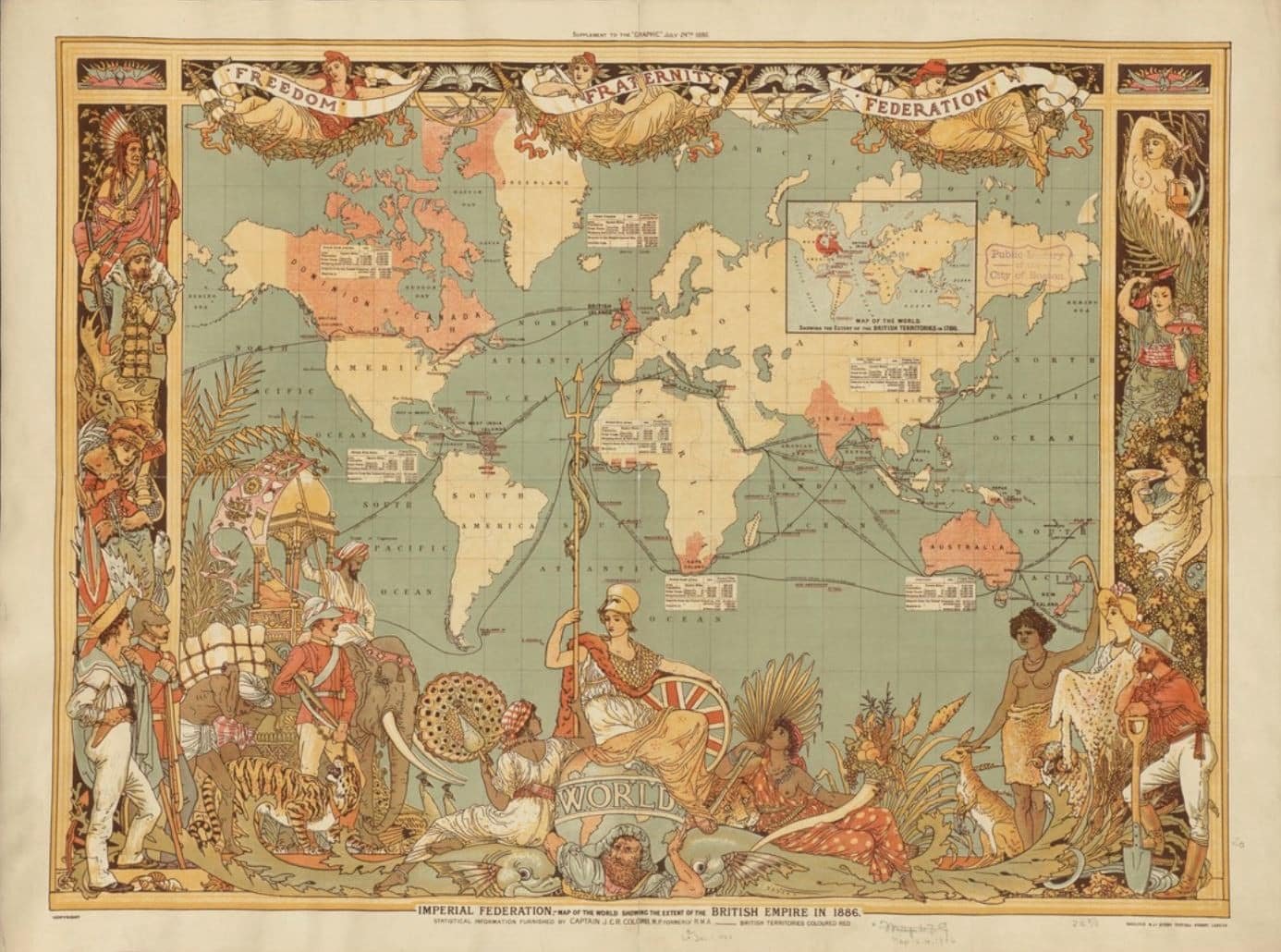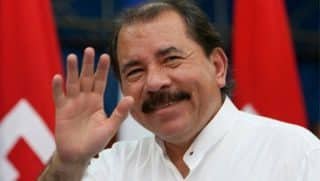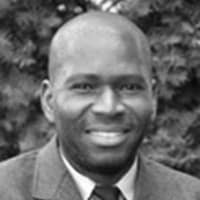
…by Jonas E. Alexis and Gabriel (for Henry Makow)
Jonas E. Alexis: The New World Order is always in the business of destroying countries and leaving the average citizen or peasant in ruin. This was largely the case in countries like El Salvador in the 1920s and 30s. As two scholars put it, “the peasants were getting screwed,” and then they saw that it was perfectly legitimate to “demand their rights.”[1] The oligarch and capitalists in the region saw themselves, according to another scholar, as “the architects of El Salvador.” One unnamed wealthy man declared: “Our entrepreneurial spirit is the country’s only natural resource. Without us the country will sink into the grave.”[2]
This led to bloody insurrections, as people “all over Central America were rising up against the dictatorships and the rich.”[3] One reason again was that “the agrarian capitalism devastated the material basis of indigenous communities and contributed to a widespread rejection of the indigenous ethnic markers…”[4] In the 1920s the peasantry in particular “suffered an agonizing decomposition”[5] because the rich and powerful were cheating the system. Not only that, they were in the business of buying people. José Napoleón Duarte Fuentes, president of El Salvador from 1984 until 1989 and former mayor of San Salvador, remembered:
“When I was running for my second term, Thomas Regalado [father of Ernesto who was kidnapped by leftist revolutionaries in 1971] invited me to his house. I had never been there before. No on I knew had. Three of four of the richest men in the city were there. They gave me a big drink, and we talked for a while.
“Then Don Tomas asked me to come upstairs with him. He said he wanted to show me a painting, but what he wanted to do was to talk to me about how I could serve them—the oligarchs. How much did I want to resign and take a job with them? Whatever I needed they would give me. They would ask only one thing: that I drop out of politics. I said, ‘Thank you for the offer, but no.’…I left the house and I never went back.”[6]
Moreover, several reports during that time said that the elite had very little concern “for even the appearance of paternalistic obligations toward their workers. The same report by the governor of San Salvador castigated large-scale landowners for their failure to provide schooling of any sort for the families of thousands of colonos and workers. Another official report underscored the meager food rations, the miserable housing, and the lack of any medical attention to workers…In addition to the pressing problems of below-subsistence wages, abusive working conditions, and growing land loss, Salvadorans also faced a food shortage.”[7]
The elite was simply asking for trouble when they attempted to cheat the system, for “many workers and peasants in western El Salvador turned to unions and eventually to revolutionary politics.”[8] There was “a sense of moral outrage and political anger” among the peasants precisely because they were living below subsistence. Modesto Ramirez, a peasant leader and insurrectionist in 1932, lamented:
“I have been an honest worker. I lived in the haciendas that surround the Lago de Ilopango as a colono of some of the senores. The time cam when they would not even offer work nor land, and if we got one of these it was under the worst circumstances and the most sterile of plots. Of the ten fanegas of corn that one manzana produces we had to return five or six as payment and for the right to live on the patron’s land we had to pay fifteen monthly days of work without wage.
“Whoever did not fulfill this obligation was expelled from the hacienda, they’d burn the rancho [hut] we built with our own labor and at our own expense. I had to abandon my woman and children; the work was not enough to feed them and less to clothe and educate them. I do not know where they are. Misery separated us forever…And when have you seen that the authorities have sided with the poor against the rich? If we owe them they rule against us but when they ow us we can’t find a court that will listen to us.”[9]
Cheating labor provides the basis of the rebellion which spread like wildfire in El Salvador, the smallest country in Central America. By October 1931, indigenous activists and peasants began to appropriate Marxist terminologies such as “bourgeois” and “proletarian” and “class struggle” in order to describe their plight.[10] They obviously saw that the rich, through their economic and agrarian infrastructure, intended to destroy their livelihood and everything they held dear, including families. As one scholar puts it, “The new crop provided enormous profits that only served to reinforce the oligarchy’s grip on the rural economy.”[11] Alberto Shul, an adolescent in the early 1930s, remembered then: “We worked from six in the morning to six at night, for a useless wage.”[12]
In 1977 and all the way to 1992, US operations in El Salvador led one disaster after another, which took the lives of at least 75,000 people and “displaced more than a million people” in a “tiny, impoverished Central American nation of 5 million.” This was known as the Salvador Option, which was “America’s largest counterinsurgency and nation-building campaign after Vietnam and before Iraq and Afghanistan.”[13]
To many critics, the US involvement in the unmitigated civil violence and chaos between El Salvador’s government and Marxist guerrillas which began in 1980 and which lasted for twelve years left a “moral black stain” on Washington.[14] Yet people like Dick Cheney and Eliot Cohen called it a success.[15] “We did counterinsurgency very well in Salvador,” Cohen declared.[16] When the United States was going to invade Iraq, Cheney summoned the “success” the United States had in El Salvador.
As I will demonstrate in a future article, the New World Order has used devastating weapons like capitalism to destroy countries in Central America. Now New World Order agents are after the new president in Nicaragua, Daniel Ortega. The Miami Herald is already upset because Ortega has allied with countries like Iran, Venezuela, Russia, and Cuba.[17] The Washington Times declared that Ortega “relies on street gangs to crush Nicaraguan government rebellion.”[18] What’s the real truth? Gabriel will unravel the political puzzle for us.
 Daniel Ortega
Daniel Ortega
Gabriel: Last year there was a revolution that very few people heard about. The powers that be came down hard on Nicaragua, and its President Daniel Ortega. This story needs sharing. It is a very different story than the propaganda about Nicaragua that’s been on display in the mainstream media going on two years.
Daniel Ortega is the former commander of the Nicaraguan Guerrilla Army. His army fought off the Contras and the Somoza dictatorships during the 1980s. Ortega became the President of Nicaragua for the first time in 1985 until 1990. In 2007, he became the president again. Then in 2011, Ortega was again elected, receiving 62% of the votes.
During the time after Ortega took office, the county improved in many areas. Under President Ortega, Nicaragua’s infrastructure improved; the poor were better off; Ortega got extra tough on narco-trafficking, and his administration encouraged and attracted tourism. Nicaragua is still one of the top three safest countries in Central America. In Nicaragua, there is considerably less violence than in its neighboring countries.
PERSONAL
I have witnessed first-hand how President Ortega has improved Nicaragua in a multitude of ways that have benefited the lives of Nicaraguans. Back in 2005, not liking the direction the United States was taking, my wife and I invested in a property in Nicaragua. This was before Ortega was elected. And after Ortega came into office, everything in Nicaragua seemed to improve. I personally enjoyed a successful vacation rental business, and all over the country, tourism boomed.
In April 2018, violence in the streets broke out. Hundreds of people were rioting, looting, and burning. The excuse for these “peaceful protests?” A change in social security requiring larger premiums. Recommended by the World Bank no less…
Ortega listening and respecting the cries of the people, reversed the controversial law. Still, there was a concerted effort to demonize him. It was as if nobody actually really cared about the unfavorable social security law. It was a pretext to overthrow the government.
During the riots and chaos, Ortega sent in police to keep the order. Seemingly on cue, the Western media reacted by demonizing him. There have been comparisons between Ortega and “bad” leaders like Chavez and Maduro. Comparisons between Nicaragua with China, Venezuela, Russia, and Iran. You know, all the “bad guys”.
Then after 2 months of violence, the country pretty much went back to its quiet and peaceful self. Yet, the United States government still warns tourists not to go. Sadly, the US has now put financial sanctions on the already down-and-out Nicaragua.
Ortega might not be a saint; there are accusations of corruption and personal enrichment during his presidency, and also of political favoritism. But comparing with the Illuminati backed opposition he is an angel. Most people in Nicaragua are really poor and were really hurting before he came up. He made education and health care a lot more accessible to them. He gave roofs and other stuff to help with their decrepit houses; also gave away animals, like pigs and cows, to the farmers.
The country’s infrastructure, in general, got much better; I personally noticed the roads getting much better after he took over. Crime, violence and drug smuggling decreased notoriously. Tourism boomed, which created a lot of jobs and improved the country’s economy in general. Nicaragua was going well, there was no reason for discontent apart from Ortego possibly enriching himself and his allies, and running up a large debt for Venezuelan oil.
New World Order Invasion
The New World Order invasion continues to this day. And Nicaragua has now descended into an economic crisis. It seems like the color revolutions in Tunisia, Egypt, Ukraine, etc.
The attack is comprised of hijacked opposition and infiltrated university professors helping to mold students to be useful revolutionaries. With the American Embassy for coordination! Unleashed mercenaries, and the whole production. And of course, the complicit church playing a role.
James Phillips, a Professor of Anthropology at Southern Oregon University has been spending a lot of time in Nicaragua since the 1980s. This is what he said:
“The police, who were blamed in the international mainstream press for much of the oppression and violence against opposition demonstrators were not on the streets but were themselves the victims of much violence. From Nicaraguans longtime international residents, one hears horror stories detailing the brutality of opposition groups torturing, burning alive, humiliating, and killing Sandinista’s or government activists, police and anyone known to be supportive or connected to the Ortega Government during the most intense period of the conflict from May to July of last year.”
All this seems to have the support of powerful agents. And Ortega taking power and staying for such a long time, perhaps was just too much for the Illuminati. They had enough. They came down on Nicaragua with all their might and lies.
John Perry of Information Clearinghouse said:
“When the regime change attempt was finally halted in July 2018, the opposition alleged through a triad of ‘human rights’ NGOs that the government had killed anywhere from 325 to 500 ‘peaceful protesters.’ This death toll was repeated in practically every international media report, on the floor of the US congress, and in the halls of the Organization of American States, all to drum up support for sanctioning the Nicaraguan government.
“But a year later, the ‘human rights’ outfits whose reports generated these numbers have started to fall apart. And as their US funding dries up, their former staffers have begun to reveal the truth about their dubious data.”
“The Grayzone reported last month on the dramatic break up of the Nicaragua Association for Human Rights (ANPDH), an opposition NGO whose board of directors confessed to exaggerating the death toll to rake in more US government money.”
In July 2019, ANPDH ex-director Gustavo Bremudeez accused his former boss, Alvaro Leiva, of “having inflated the death toll.”
“We personally asked him where you got that figure; a friend calls me saying to please get his grandmother who died of a heart attack off the list of people who were supposedly victims of the repression. But ANPDH group is only one part of a sizable human rights industry in Nicaragua that has functioned as a weapon of regime change. And now that the coup they participated in has failed, the network is collapsing.”
Other international agents that cooperated in the coup were Amnesty International and Human Rights Watch (HRW), the UN Commission for Human Rights(UNCHR) and the Interamerican Commission for Human Rights(IACHR).
Nicaragua’s President Daniel Ortega has stood tall through the destruction and lies that have been unleashed in his country. Like Augusto César Sandino when he defended Nicaragua against the United States, or when Ortega’s army defeated the mercenary Contras in the early 1980s, there seems to be no running away or backing down with Daniel Ortega.
Time will tell how this story ends.
- [1] Jeffrey L. Gould and Aldo A. Laurio-Santiago, To Rise in Darkness: Revolution, Repression, and Memory in El Salvador, 1920-1932 (Durham and London: Duke University Press, 2008), x.
- [2] Russell Crandall, The Salvador Option: The United States in El Salvador, 1977-1992 (Cambridge: Cambridge University Press, 2016), 48.
- [3] Gould and Laurio-Santiago, To Rise in Darkness, 24-25.
- [4] Ibid., xv.
- [5] Ibid., 3.
- [6] Crandall, The Salvador Option, 51.
- [7] Gould and Laurio-Santiago, To Rise in Darkness, 21.
- [8] Ibid.
- [9] Ibid., 27-28.
- [10] Ibid., 134-135.
- [11] Crandall, The Salvador Option, 16.
- [12] Gould and Laurio-Santiago, To rise in Darkness, 28.
- [13] Crandall, The Salvador Option, 2.
- [14] Ibid., i-1.
- [15] Ibid., 3-4.
- [16] Ibid.
- [17] Francisco Aguirre-Sacasa, “Its democracy at risk, Nicaragua can’t become the region’s next Venezuela,” Miami Herald, June 7, 2018.
- [18] Martin Arostegui, “Echoes of Venezuela: Ortega relies on street gangs to crush Nicaraguan government rebellion,” Washington Times, July 29, 2018.

Jonas E. Alexis has degrees in mathematics and philosophy. He studied education at the graduate level. His main interests include U.S. foreign policy, the history of the Israel/Palestine conflict, and the history of ideas. He is the author of the book, Kevin MacDonald’s Metaphysical Failure: A Philosophical, Historical, and Moral Critique of Evolutionary Psychology, Sociobiology, and Identity Politics. He teaches mathematics in South Korea.
ATTENTION READERS
We See The World From All Sides and Want YOU To Be Fully InformedIn fact, intentional disinformation is a disgraceful scourge in media today. So to assuage any possible errant incorrect information posted herein, we strongly encourage you to seek corroboration from other non-VT sources before forming an educated opinion.
About VT - Policies & Disclosures - Comment Policy




This book may be of interest regarding uprisings etc.
The Inns of Court
Author Cecil Headlam
Published 1909
Download via Gutenberg app
Or
https://www.amazon.co.uk/Inns-court-Cecil-Headlam/dp/1115201182
Comments are closed.